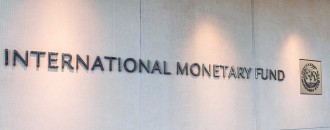
Not all ‘bank accounts’ in India are active: World Bank
The Dollar Business Bureau  India saw strong growth in Bank account ownership between 2011-14 from 35% to 53%, but there were many dormant ones too, said World Bank’s ‘The Global Findex Database 2014’ report which, is the index for Measuring Financial Inclusion around the World. The report added that, in August 2014, the Indian government launched the Pradhan Mantri Jan Dhan Yojana scheme for comprehensive financial inclusion with the goal of opening a bank account for every household. To encourage new accounts, the scheme offered attractive features such as zero balances, overdraft facilities, and free life insurance. By the end of January 2015, it had led to the opening of 125 million new bank accounts; as a point of comparison, a 2013 survey had found that fewer than 400 million people in the country had an account. But the scheme has attracted criticism for expanding the public sector’s role in banking—more than 97% of the new accounts are at public banks. In addition, 72% of the accounts show zero balances. This may be in part because many new account holders may not yet have had an opportunity to use their accounts—especially since the accounts were not set up for an explicit purpose, such as to receive wages or government transfer payments. Moreover, only 39% of all account holders in India own a debit or automated teller machine (ATM) card, and using an account might be inconvenient and time-consuming if every transaction requires using a bank teller. Both China and India saw strong growth in account ownership between 2011 and 2014—in China account penetration increased from 64% to 79%, and in India from 35% to 53%. Translated into absolute numbers, this growth means that 180 million adults in China and 175 million in India became account holders—with the two countries together accounting for about half the 700 million new account holders globally. A closer look at who the newly banked are in these two countries reveals differences in how that growth was distributed across groups of individuals. In China, while account penetration increased by 15% points on average, the growth varied substantially across different groups. For example, account penetration grew by 26% points among adults in the poorest 40% of households but by only 8% points among those in the richest 60%. It grew faster among those in the poorest 40% of households in part because there was more room for growth in that group; by 2011, 76% of adults in the richest 60% already reported having an account. Account penetration also grew more strongly among adults living in rural areas and among older adults. There was no clear difference in rate by gender, however; account penetration grew by about 15% points among both men and women. For India, by contrast, the data showed little such variation. The overall growth in account penetration of 18 points is evenly reflected across all groups of individuals for which the data are broken down, the report concluded.
India saw strong growth in Bank account ownership between 2011-14 from 35% to 53%, but there were many dormant ones too, said World Bank’s ‘The Global Findex Database 2014’ report which, is the index for Measuring Financial Inclusion around the World. The report added that, in August 2014, the Indian government launched the Pradhan Mantri Jan Dhan Yojana scheme for comprehensive financial inclusion with the goal of opening a bank account for every household. To encourage new accounts, the scheme offered attractive features such as zero balances, overdraft facilities, and free life insurance. By the end of January 2015, it had led to the opening of 125 million new bank accounts; as a point of comparison, a 2013 survey had found that fewer than 400 million people in the country had an account. But the scheme has attracted criticism for expanding the public sector’s role in banking—more than 97% of the new accounts are at public banks. In addition, 72% of the accounts show zero balances. This may be in part because many new account holders may not yet have had an opportunity to use their accounts—especially since the accounts were not set up for an explicit purpose, such as to receive wages or government transfer payments. Moreover, only 39% of all account holders in India own a debit or automated teller machine (ATM) card, and using an account might be inconvenient and time-consuming if every transaction requires using a bank teller. Both China and India saw strong growth in account ownership between 2011 and 2014—in China account penetration increased from 64% to 79%, and in India from 35% to 53%. Translated into absolute numbers, this growth means that 180 million adults in China and 175 million in India became account holders—with the two countries together accounting for about half the 700 million new account holders globally. A closer look at who the newly banked are in these two countries reveals differences in how that growth was distributed across groups of individuals. In China, while account penetration increased by 15% points on average, the growth varied substantially across different groups. For example, account penetration grew by 26% points among adults in the poorest 40% of households but by only 8% points among those in the richest 60%. It grew faster among those in the poorest 40% of households in part because there was more room for growth in that group; by 2011, 76% of adults in the richest 60% already reported having an account. Account penetration also grew more strongly among adults living in rural areas and among older adults. There was no clear difference in rate by gender, however; account penetration grew by about 15% points among both men and women. For India, by contrast, the data showed little such variation. The overall growth in account penetration of 18 points is evenly reflected across all groups of individuals for which the data are broken down, the report concluded.
This article was published on April 16, 2015 – 7.21 pm IST.





 to success.
to success.